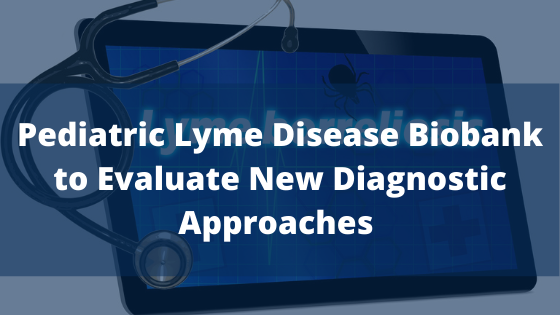Children are disproportionally affected by Lyme disease, which is diagnosed in more than 300,000 persons in the United States each year. Clinicians diagnose Lyme disease using a 2-tier examination of enzyme immunoassay (EIA) and immunoblot results. Current Lyme disease diagnostic tests have well-described limitations that include false negatives early in the disease and the inability to distinguish between resolved, active, and recurrent infections. Clinicians must also wait several days for Lyme disease serologic results, a delay that might contribute to late or unnecessary treatment with antimicrobial drugs.

The increased incidence of Lyme disease, limitations of current tests, and lack of studies in children demonstrate the need for a systematic approach to Lyme disease diagnosis in children. Developing improved diagnostic techniques relies on biobanks of samples collected from patients with Lyme disease and clinical mimics (i.e., patients with similar signs and symptoms caused by non-Lyme illnesses). Below are some of the Lyme disease biobanks in the USA –
- Lyme Disease biobank – By the US Centers for Disease Control and Prevention (Atlanta, GA)
- Slice Study – By Johns Hopkins Lyme Disease Research Center (Baltimore, MD, USA)
- Lyme Disease Biobank – By the Bay Area Lyme Foundation
To date, none of these biobanks have included children or used emergency departments for enrollment. In 2015, Lise E. Nigrovic, MD, MPH, Boston Children’s Hospital, founded Pedi Lyme Net. It’s a pediatric Lyme disease research network comprising 8 emergency departments in a diverse range of areas to which Lyme disease is endemic.
This paper describes the characteristics of enrolled children 1–21 years of age who underwent emergency department evaluation for Lyme disease during June 1, 2015–January 31, 2020.
Click here to read more.
